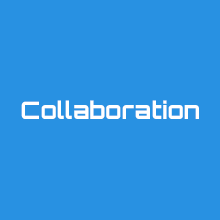Collaboration within supply chain is extremely important within an organization. Without proper collaboration, efficiency and meeting consumer needs may fall behind or fall short. Therefore, when you want to get the absolute most out of your supply chain, you need to make sure that you have effective collaboration that enables all parties involved to share relevant information in real time.
 It all may seem a bit complicated at first, but there are three levels of supply chain collaboration that are relevant within your organization. Utilizing these types of collaboration ensure that orders are met in time, production is on time, and that the overall organization is on the same page. Therefore, here are the three forms of collaboration in supply chain management.
It all may seem a bit complicated at first, but there are three levels of supply chain collaboration that are relevant within your organization. Utilizing these types of collaboration ensure that orders are met in time, production is on time, and that the overall organization is on the same page. Therefore, here are the three forms of collaboration in supply chain management.
Types of Collaboration in Supply Chain Management
The types of collaboration in supply chain management pertain to the following:
- Transaction Integration - Level one of collaboration in supply chain management pertains to the computerization of general business activities and transactions. In order to conduct these functions, you are able to utilize the Internet, EDI, or propriety software tools. Within this level, you and your supply team are able to exchange data such as sales orders, work orders, invoices, credit/debit notes, and more.
- Supply Chain Management Information Sharing - Within this level, you are sharing information among various supply chain members using the Internet, EDI or proprietary software tools as well. Types of shared information within supply chain include production and transportation plans, bills of materials, production forecasts, orders, and more.
- Strategic Collaboration - Once you have understood the other types of collaboration within supply chain management, you can come to strategic collaboration. Within this level, you and your supply chain partners will be collaborating on planning and the redesign process, which will usually enable you to share some risk and reward. You will be making decisions pertaining to improving forecast accuracy, improving supply chain relationships, increasing profitability, and improving sales.
Understanding and utilizing these forms of collaboration within your supply chain can allow you to step up your game against competitors and ultimately take your supply chain to the next level. One of the most prominent softwares that enable you to utilize these forms of collaboration is PlanetTogether’s Advanced Planning and Scheduling Software. Advanced Planning and Scheduling Software enables individuals to be able to have insight into their overall supply chain process and locate areas that are in need of efficiency optimization. It provides a visual representation of your production process and manipulate areas that are falling behind. Advanced Planning and Scheduling Software is an absolute necessity for manufacturing facilities that are seeking to maintain a competitive edge within their industry and ensure that they continue to optimize production.
Advanced Planning and Scheduling Software
Advanced Planning and Scheduling (APS) software has become a must for modern-day manufacturing operations due to customer demand for increased product mix and fast delivery combined with downward cost pressures. APS can be quickly integrated with a ERP/MRP software to fill gaps where these system lack planning and scheduling flexibility and accuracy. Advanced Planning and Scheduling (APS) helps planners save time while providing greater agility in updating ever-changing priorities, production schedules, and inventory plans.
- Create optimized schedules balancing production efficiency and delivery performance
- Maximize output on bottleneck resources to increase revenue
- Synchronize supply with demand to reduce inventories
- Provide company-wide visibility to capacity
- Enable scenario data-driven decision making
Implementation of Advanced Planning and Scheduling (APS) software will take your manufacturing operations to the next level of production efficiency, taking advantage of the operational data you already have in your ERP.
Related Capacity Video
APS Resources
Topics: collaboration




















LEAVE A COMMENT